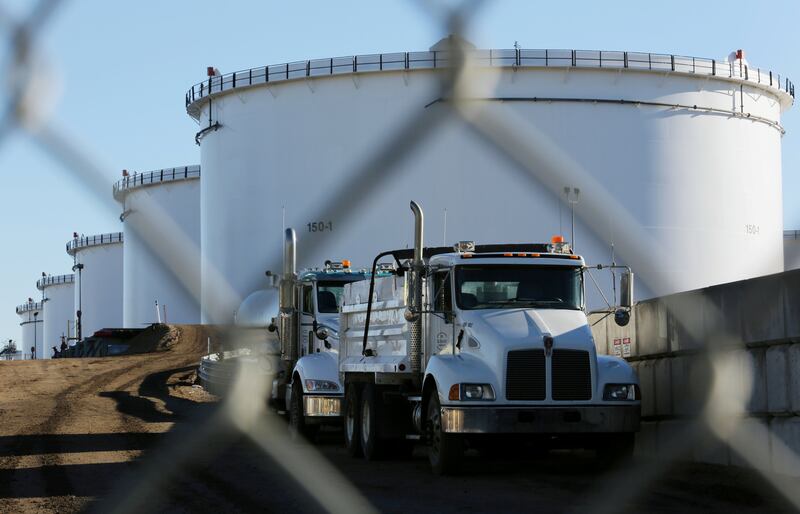Oil prices fell further on Thursday, with traders expecting a resolution to the current impasse between members of the Opec+ producers group.
Brent, the international benchmark for crude, fell 1.52 per cent to $73.62 per barrel at 4.03pm UAE time. West Texas Intermediate, the main gauge for US oil, was down 1.63 per cent at $71.94 per barrel.
Oil prices began to lose steam on Wednesday amid reports that Opec+ reached a compromise with the UAE on the metric used to decide its production quotas and move its baseline for quotas to April 2020.
The UAE had held out against extending the current curbs using an outdated baseline measurement of its production capacity.
However, the Emirates' Ministry of Energy and Infrastructure dismissed reports of a deal being struck, saying that "deliberations are still underway".
"An agreement had not been reached yet," the ministry said in a statement on Wednesday carried by the state news agency Wam.
Opec+, which is headed by Saudi Arabia and Russia, currently calculates the UAE's quota using an October 2018 baseline, which sets its production capacity at 3.168 million barrels per day.
The Emirates, which is Opec's third-largest producer, is investing heavily in raising its production capacity to 5 million bpd by 2030 and has called on fellow producers to use a more current baseline to allocate its quota.
Under the two-year-old baseline, the discrepancy between the UAE's current production capacity and its baseline is nearly 18 per cent – the highest proportion among producers within the bloc.
"In terms of near-term impact on oil market balances and prices, a production increase from Opec+ from September onward would largely fall in line with our projections of a market deficit of around 1.3-1.5 million bpd and prices held in a $70-75 per barrel range for the rest of 2021," Edward Bell, senior director of market economics at Dubai-based Emirates NBD, in a note on Thursday.
Risks of a breakdown among Opec+ members would be "significant", Mr Bell cautioned.
"A confirmation in coming days for output from September onward would help to set a floor under prices and prevent any substantial declines in the short term," he added.
Separately, Opec continued to maintain its demand growth forecast for crude at almost 6 million bpd for 2021, leaving the estimate unchanged in its July report for the third consecutive month.
Total global oil demand is set to reach 96.6 million bpd, the group said in its latest monthly market report. Opec expects oil demand from the Americas bloc of the Organisation for Economic Co-operation and Development group of nations to continue to remain robust throughout the third quarter. The region saw a pick-up in demand in the second quarter as vaccination gathered pace, particularly in the US, which has the highest number of Covid-19 infections globally.
"Solid expectations exist for global economic growth in 2022. These include improved containment of Covid-19, particularly in emerging and developing countries, which are forecast to spur oil demand to reach pre-pandemic levels in 2022," Opec said in its report on Thursday.
Oil demand growth for 2022 is expected at 3.3 million bpd year-on-year, reaching close to the pre-pandemic levels at an estimated 99.86 million bpd. Overall global demand next year will exceed the 100 million bpd seen before Covid in the second half of 2022, Opec said.







